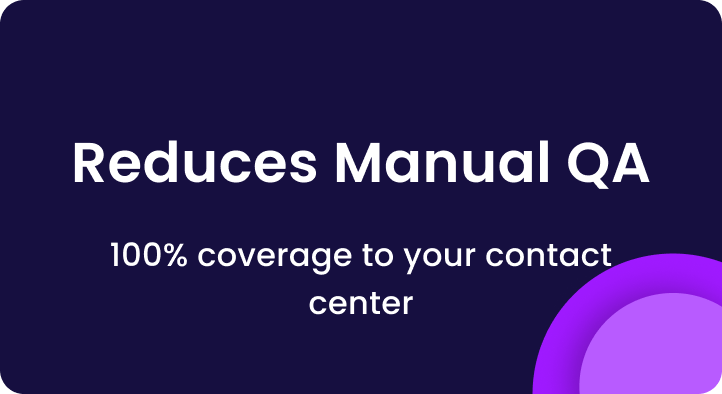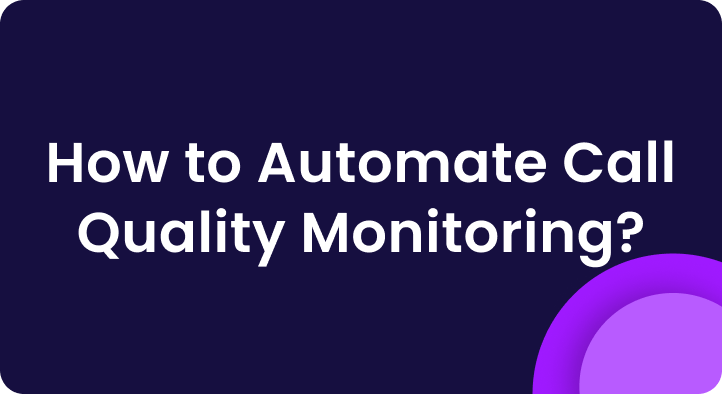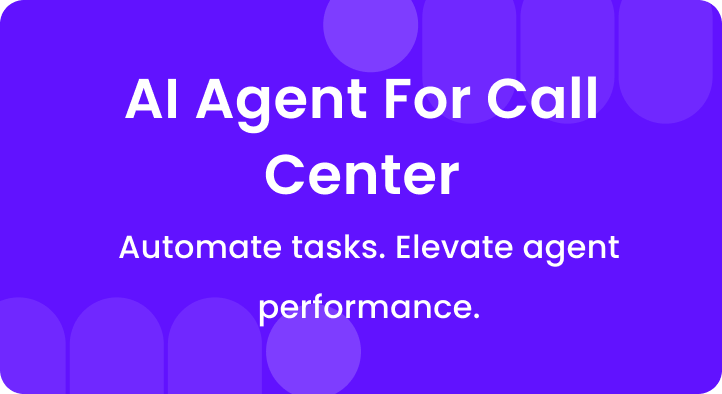Call centers run on conversations. But if you’re not tracking the right metrics, you’re only seeing part of the picture.
To improve agent performance, customer experience, and business outcomes, you need to measure what actually matters.
Here’s a breakdown of the key call metrics that every business should track, and what each one tells you.
1. First Call Resolution (FCR)
What it tells you: How often agents solve customer issues on the first interaction.
If your FCR is low, customers are being transferred, following up repeatedly, or leaving without a solution.
That leads to frustration, poor CSAT scores, and increased call volume.
How to use it:
- Identify call types that frequently require follow-ups
- Coach agents on resolution skills
- Improve documentation and internal knowledge sharing
2. Average Handle Time (AHT)
What it tells you: How long it takes to complete a call, including talk time and hold time.
AHT gives you a view into efficiency, but it can be misleading on its own.
Fast calls aren’t always good, and long calls aren’t always bad.
How to use it:
- Balance AHT with FCR and CSAT
- Look for agents who are rushing or overexplaining
- Identify process or tool issues that slow down resolution
3. Call Sentiment and Emotional Tone
What it tells you: How customers feel during and after the call.
AI tools can detect sentiment from voice tone, language choice, and pacing.
This gives you a more accurate picture of customer experience than surveys alone.
How to use it:
Track sentiment trends by agent, team, or issue
Flag calls with negative emotion for review
Coach agents on tone, empathy, and listening
4. Silence Time and Talk Ratio
What it tells you: Whether the conversation flowed naturally or felt awkward and unbalanced.
Long silences often signal confusion or technical issues.
A high talk ratio may indicate that agents are overtalking or not letting customers explain their concerns.
How to use it:
- Set talk-to-listen benchmarks
- Identify moments where agents need to pause or clarify
- Improve scripting and training for better pacing
5. Compliance and Script Adherence
What it tells you: Whether agents are following legal, regulatory, or internal procedures.
Missed disclaimers or skipped verification steps can create risk, especially in industries like lending, healthcare, and insurance.
How to use it:
- Use AI to track adherence across all calls
- Flag high-risk calls for manual review
- Build targeted compliance training programs
6. Customer Satisfaction (CSAT)
What it tells you: How customers rate their experience after a call.
CSAT scores are usually collected through surveys.
While not perfect, they’re still a valuable indicator of how customers perceive agent effectiveness and tone.
How to use it:
- Compare CSAT with sentiment scores for deeper insight
- Recognize high performers and identify coaching needs
- Tie CSAT improvements to coaching efforts
7. Escalation Rate
What it tells you: How often calls are passed to a supervisor or second-level support.
High escalation rates may suggest that agents lack the confidence, authority, or tools to resolve issues on their own.
How to use it:
- Analyze common reasons for escalation
- Improve training and empower agents to handle more issues
- Track reduction in escalations after coaching
8. Hold Time and Transfer Rate
What it tells you: How often customers are put on hold or bounced between departments.
Long hold times and frequent transfers lead to frustration and lower trust.
They also indicate inefficiencies in routing or knowledge management.
How to use it:
- Optimize call routing logic
- Provide agents with faster access to answers
- Audit team handoff processes
9. Call Volume and Call Patterns
What it tells you: When customers are calling, how often, and about what.
Tracking call volume helps with staffing, planning, and trend analysis. If specific topics spike, that might point to product issues or unclear policies.
How to use it:
- Identify seasonal or weekly volume spikes
- Monitor call drivers and root causes
- Adjust scripts, training, or processes accordingly
10. Repeat Call Rate
What it tells you: Whether customers are calling back about the same issue.
A high repeat call rate usually means poor resolution, lack of follow-through, or unclear information during the first call.
How to use it:
- Tag calls related to unresolved issues
- Coach agents on thorough follow-up
- Monitor repeat contact patterns by product or issue type
How AI Enhances These Metrics?
AI doesn’t just collect these metrics. It analyzes them across every call, finds patterns, and flags outliers. That means you’re not just tracking, you’re actually learning.
For example:
AI can link sentiment scores with FCR to show where low empathy leads to unresolved issues
It can flag calls with missed compliance phrases in real time
It can group high-hold-time calls to highlight broken workflows
This turns metrics into action and helps QA, supervisors, and training teams work from the same playbook.
Final Thoughts
Tracking call metrics isn’t just about dashboards. It’s about visibility.
The right metrics help you understand agent performance, customer experience, and operational gaps, all in one view.
Start with the fundamentals like FCR, AHT, and CSAT. Layer in behavioral insights like sentiment, talk time, and script adherence.
Then use those insights to coach better, act faster, and serve customers smarter.
The better your metrics, the better your decisions.



